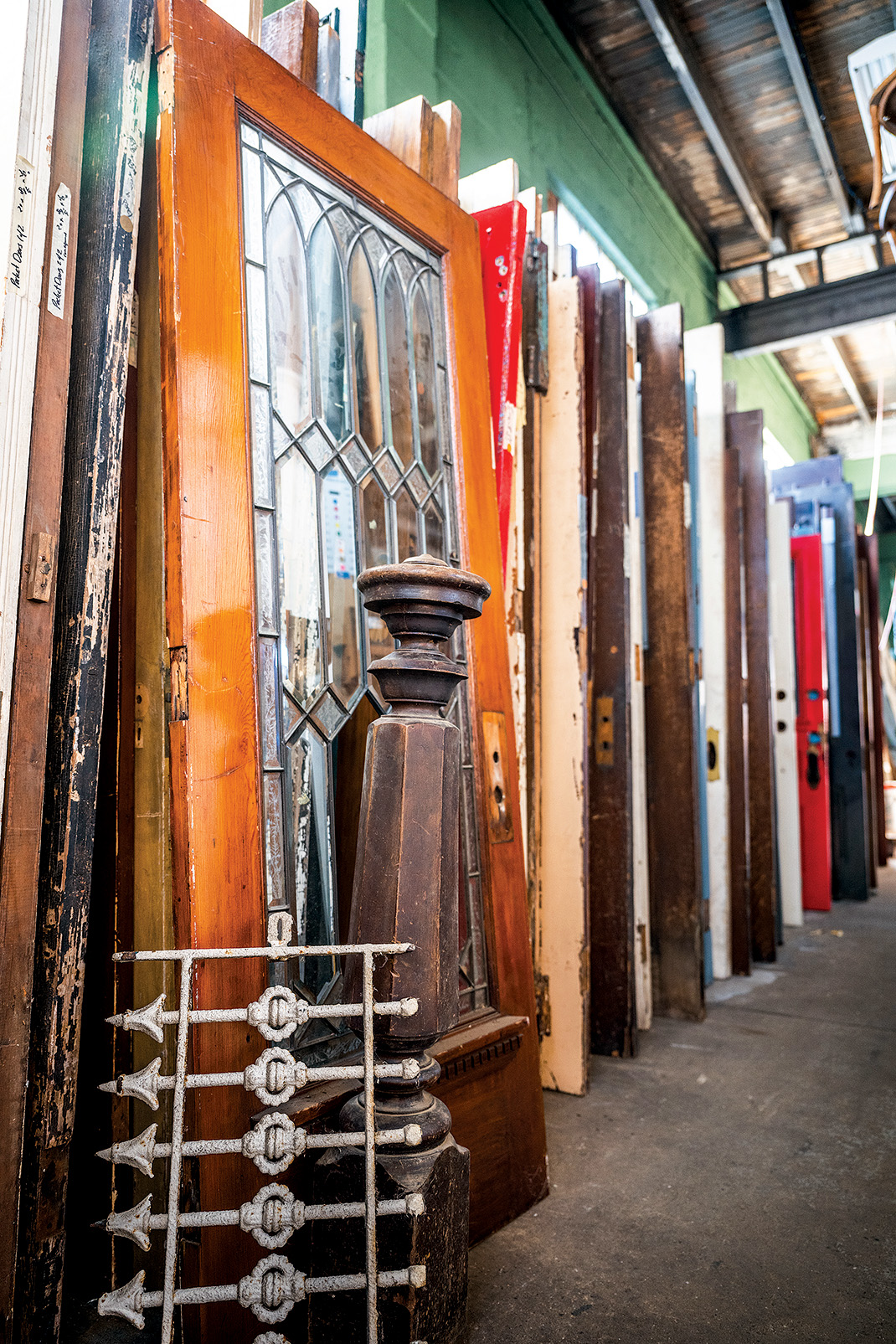
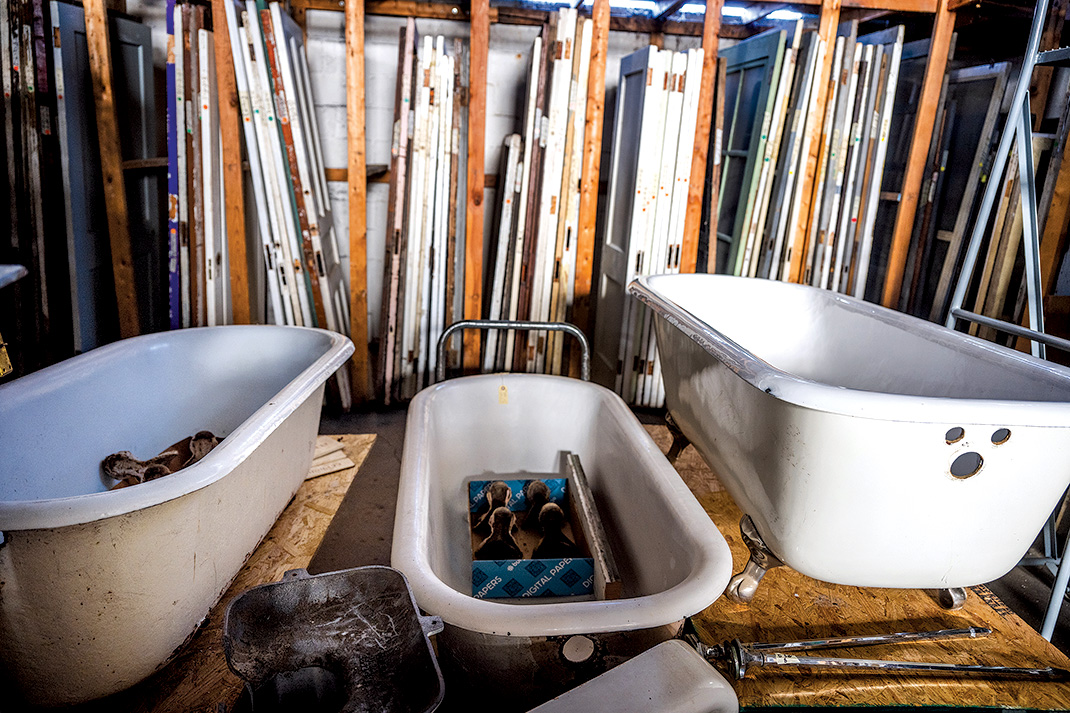
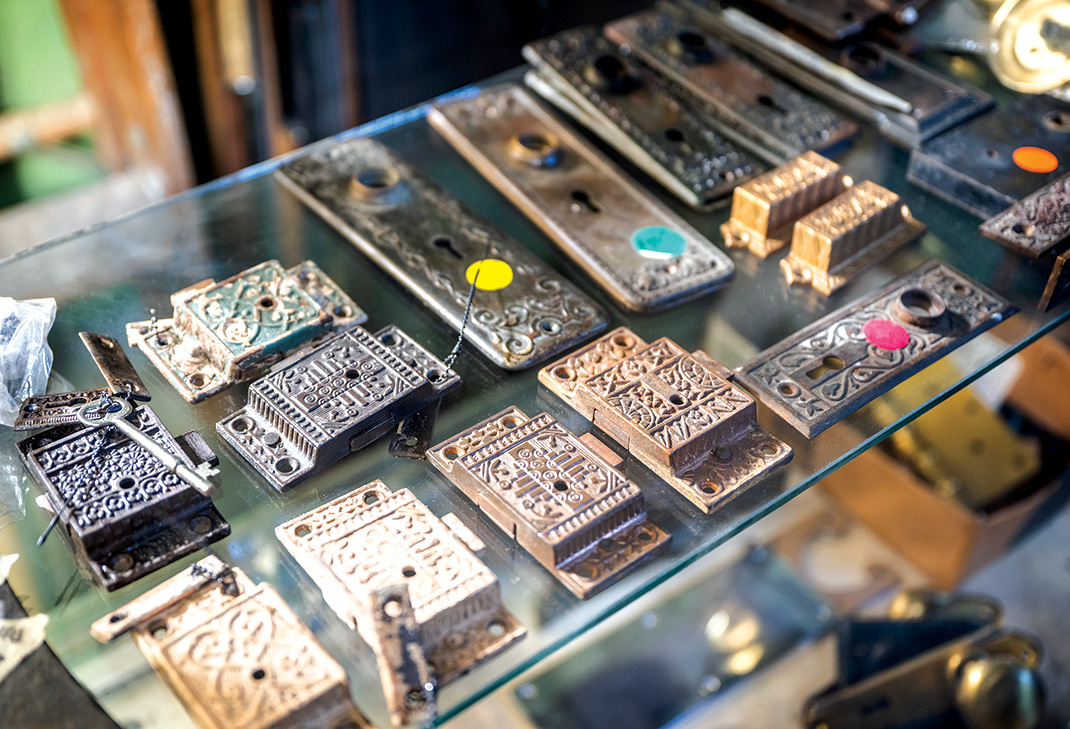
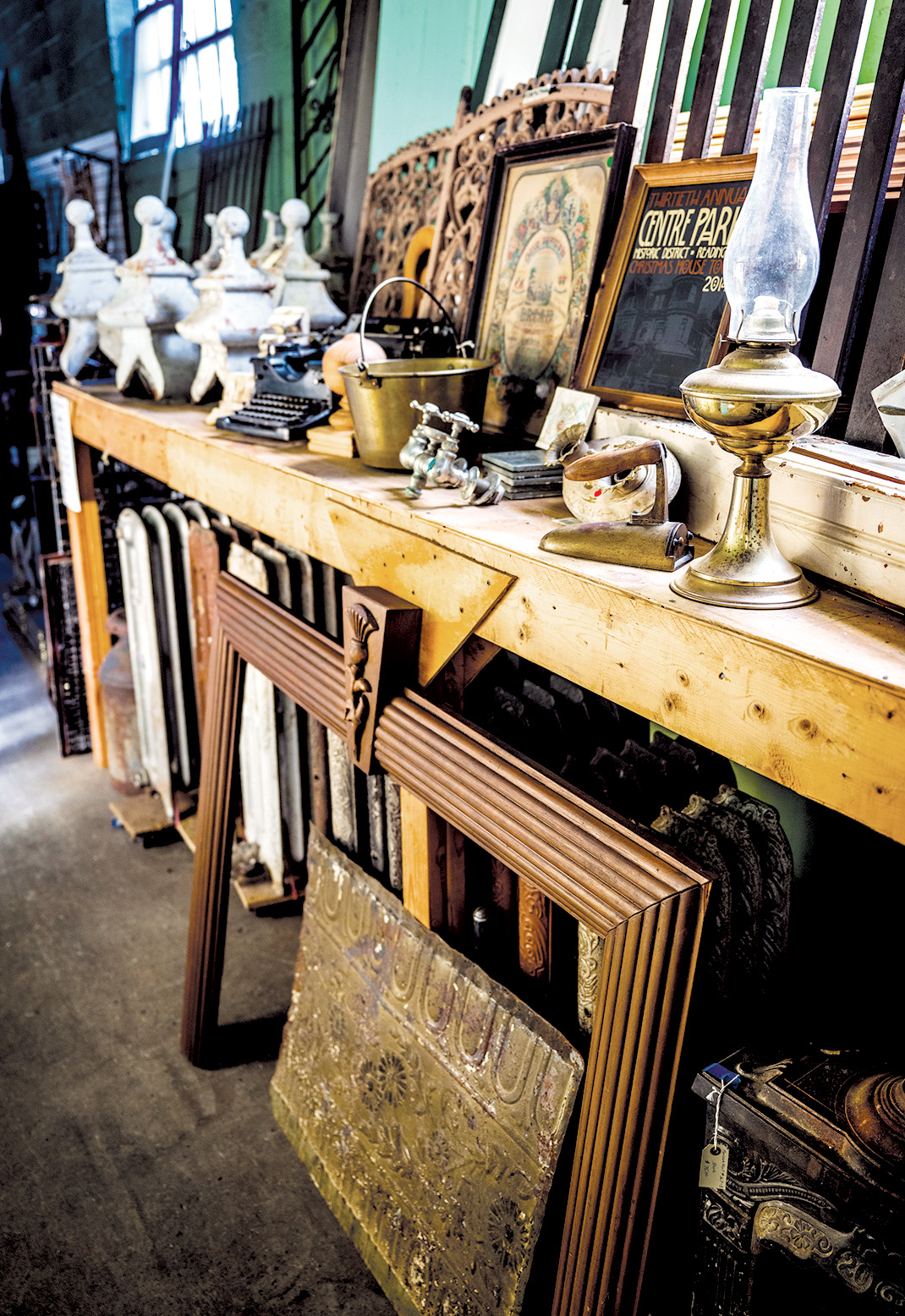
It’s deep winter. It’s cold. Snow and ice are seemingly always lurking. Weeks will pass until the first signs of green shoots proclaim the advent of spring.
Likely, there’s some place you’d rather be. But if you’re not looking to a jaunt that will take you somewhere far flung and warm, you might want to consider a time-travel experience right in the heart of Berks County. Not time travel in the literal sense, but rather in an a more objective manner. You can be surrounded by objects that began their existence and use in a different era, often a prior century or two, but whose worthiness endures.
Puzzled? Don’t be. Just take a drive over to the 700 block of N. Fifth Street in Reading’s Centre Park Historic District and walk through the doors of the Centre Park Artifacts Bank. You’ll find yourself enveloped in objects of other eras.
Α Βank of Surprises
What’s there may surprise you. Indeed, even those the behind the “bank” continue to find unique objects that pique their interest as well as buyers locally and from a variety of states.
Primarily, the bank’s inventory consists of salvaged architectural elements – doors, windows, period woodwork, gates, mantels, cornels, columns. There are also light fixtures from chandeliers to globes, sinks and bathtubs, and hardware. Much was salvaged by Centre Park volunteers from properties set for demolition through agreements with the City of Reading and County of Berks and their designated contractors.
“We have three different ways of acquiring items,” says Michael Lauter, executive director of the Centre Park Historic District. “We go into the properties prior to demolition, receive donations, or get items on consignment.”
Hardware is a top category for donations – locks, door plates, doorknobs, hinges. Actual doors come in second, he says. Indeed, for many years the bank had so many doors in inventory, there would be $5 door sales to calve the supply. Now those semi-annual sales feature a percentage off of selected doors.
Rescued Treasures from the Ruins
O. Christopher Miller, a long-time Centre Park resident, property owner, and now the locale’s City Council representative, was a member of that salvage crew for many years.
“One of the biggest (salvages) was when (the former) Community General Hospital took down the buildings on the northeast corner of Sixth and Walnut,” he says. “There were two on Sixth and three on Walnut.”
Other memorable salvages were the sites of the former Farr’s, Whitner’s, Pomeroy’s and Luden’s buildings, he says. Discovered in the bowels of the old Farr’s building on Penn Street (a structure with 18th century residential roots) was a large, “very early” copper and wood with wood frame bathtub.
“It was very rustic and very rough,” Miller says. “I can’t imagine taking a bath in it.”
But it caught someone’s eye and was sold in short order. The cavernous Whitner’s building produced a number of items, including rolls of wrapping paper stocked in the defunct department store’s basement – and the signage on the building itself.
“That alone was a very big salvage,” recalls Miller. “That (the Whitner’s name) was about 20 feet long and the letters were five or six feet tall. A guy in Mohnton bought the whole thing.”
The classic signage from Farr’s was also salvaged and sold by the artifacts bank. Miller has the letters spelling “Men’s” and the writer of this article has one of the large “Rs” displayed in her home. Among the most unusual items Miller helped salvage were the elevator dials from the old Pomeroy’s store at Sixth and Penn. Luden’s yielded slabs of pink marble and marble-topped furnishings. A three-foot piece of pink marble serves as a cheese board in Miller’s home. More of the city’s history was uncovered when the crew rescued old N. Ninth Street Christmas decorations – red cellophane hoops with stars in the center – from a property being razed on the northeast corner of Ninth and Court streets.
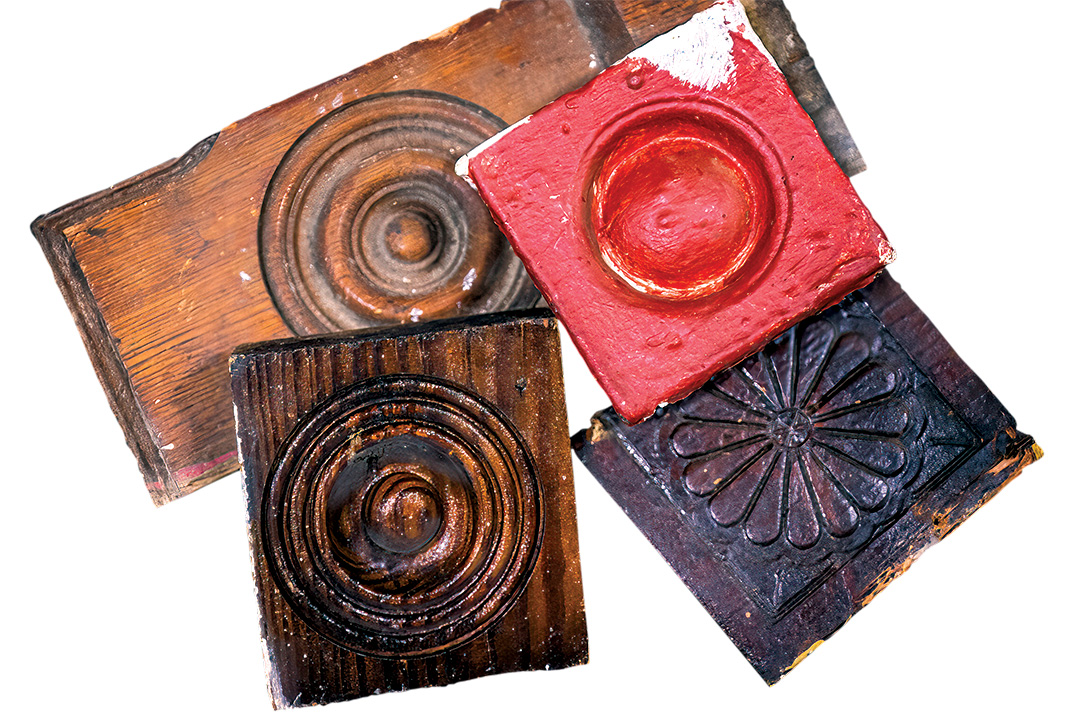
Loyal Customers
Miller has been not just a salvager but also a steady customer of the artifacts bank. As he and his spouse acquire and restore old Reading properties, primarily in and around Centre Park, they have purchased doors, cabinets, windows, moldings, tiles and other architectural elements.
“With older properties, you learn that not much is of a standard size,” he says. “You can’t just go to a home improvement store and find what you need.”
The many annual events sponsored by the now four-decade-old district attract hundreds from near and far who value the beauty of the neighborhood and its exquisite architecture highlighting the Victorian, Edwardian and arts-and-crafts styles of the mid- to late-19th and early 20th centuries. Chief among them are the holiday house tour and garden tour. The district headquarters, which houses the artifacts bank, is always a part of the tours.
Jeffry Rhoads of Pike Township decided to take the garden tour 10 years ago. The owner of Rhoads Antiques, he found himself enamored of the neighborhood and stunned by the artifacts bank inventory. He quickly transitioned from a visitor and buyer to a devoted and dependable volunteer. Rhoads and his wife reside in a circa 1765 farmhouse, once a tannery, on the outskirts of Lobachsville.
A student of the Pennsylvania German culture, he gives talks on local redware. He has conducted his business primarily at show for the past 30 years and via eBay and online sales. An avid collector, he is now focusing on the works of Berks County artists.
“Truth be told, I think I buy more than I sell,” he laughs.
The objects that caught Rhoads’ eye at the artifacts bank were many. One consigned piece in particular – which he did not acquire – remains memorable. It was harvested from an ancient farmhouse set to be demolished.
“This was the most unusual thing in my tenure or experience here,” he says. “We received a late 18th century fireplace enclosure complete with the mantel, the mantel surround with its doors, and the lintel, a structural component. It included the hand-hewn oak beam to be mounted into a stone wall and even included the hinges for the cooking crane. For someone with a walk-in fireplace with the right dimensions, it was a once-in-a-lifetime deal. It even had the original blue-green paint.”
Doors in Spirited Places
Among the items Rhoads has acquired are doors. And he has repurposed them in ways that are pragmatic and inspirational.
“I did two major projects,” he says.
One is a wine cellar constructed with period moldings and doors in his basement. The other, in his summer kitchen, is a bar created from ladder doors salvaged from an early Berks farmhouse. With laying the doors on their sides, the horizontal panels turned vertical. The end posts are old porch rafters. The bar has a cherry top purchased elsewhere.
“It conveys the old look which I’m very pleased with,” he says.
Rhoads also purchased a number of old windows and assembled them into a room divider separating the couple’s family room and bar into definitive spaces. All three men agree doors and other architectural elements at the artifacts bank play key roles in historical architectural authenticity in the city – and beyond.
The City Weighs in
Amy Johnson, the city’s historic preservation specialist, concurs.
“The Artifacts Bank is a wonderful resource for the citizens of Reading that own property in and outside of the city’s historic districts, and that are trying to make historically appropriate renovations in order to restore their homes,” she says. “For work that falls outside of the Historic District Ordinance regulations, I often recommend that a property owner donate an item that they no longer plan on using to the Artifacts Bank with the hope that it can be used in another property owner’s restoration project.”
The doors, moldings, window frames, mantels, stair rails, spindles and other architectural objects in stock also have two other things going for them: low pricing and the fact they are crafted out of old-growth wood. That wood is the product of century-old-plus forests. It is far denser and far more durable than more modern objects made from trees specifically designed for rapid growth with a far less dense fiber which opens itself to instability, even decay.
The pricing is based on an “as-is” policy. Both Lauter and Rhoads note that the bank has neither the experts nor funding to professionally refinish damaged items. Hence, a stained-glass window with a broken piece will be priced far lower than its perfect condition counterpart in an antiques store.
Lauter says one regular customer is a respected antiques dealer in York. He purchases items that he knows will have willing buyers when restored. As he does his own work, he justifiably reaps the pecuniary benefits.
“Because we are a nonprofit, our prices are cheaper,” Rhoads says, “so it makes sense that a for-profit entity sells things at higher prices.”
Factoring in Sustainability
Bethany Ayers Fisher, the city’s sustainability manager, is also a big fan of the artifacts bank and its purpose.
“In waste management, we often talk about the three Rs: reduce, reuse and recycle,” she says. “This doesn’t just apply to our household trash and our blue-bin curbside recycling programs. One of our largest waste streams is C&D, construction and demolition waste.”
The city’s cost of dealing with illegal dumping is in the millions of dollars. If people were more aware of reuse facilities like the artifacts bank, that might mitigate some of the problem, she believes.
She also cites the compatibility and durability of objects with the city housing stock.
“In older neighborhoods, reusing home hardware, structural items and furnishings is often the best way to make repairs and updates,” she says. “These items are usually of much higher quality than is available today, and were, in many cases, locally manufactured. Since they were made for our homes, you might be able to find the same door knobs, windows or cabinet hardware that matches the rest of your home. You may be able to find the same style of fencing to replace a section instead of replacing the whole fence.”
And, for Ayers Fisher, it also comes down to being a good citizen of the environment.
“Reusing home hardware, furnishings and structural items reduces the amount of trash in the landfills, reduces the impacts of mining and smelting on our environment, and reduces greenhouse gas emissions from these processes,” she says. “You also don’t have to worry about disposing of all of the packaging when purchasing salvaged or used items!”
In addition to the architectural elements, the bank offers dishware, local history books, decorative objects, home furnishings (upholstered items not accepted), lamps and even some intriguing knick-knacks. Lauter is the contact person for those interested in consigning such pieces.
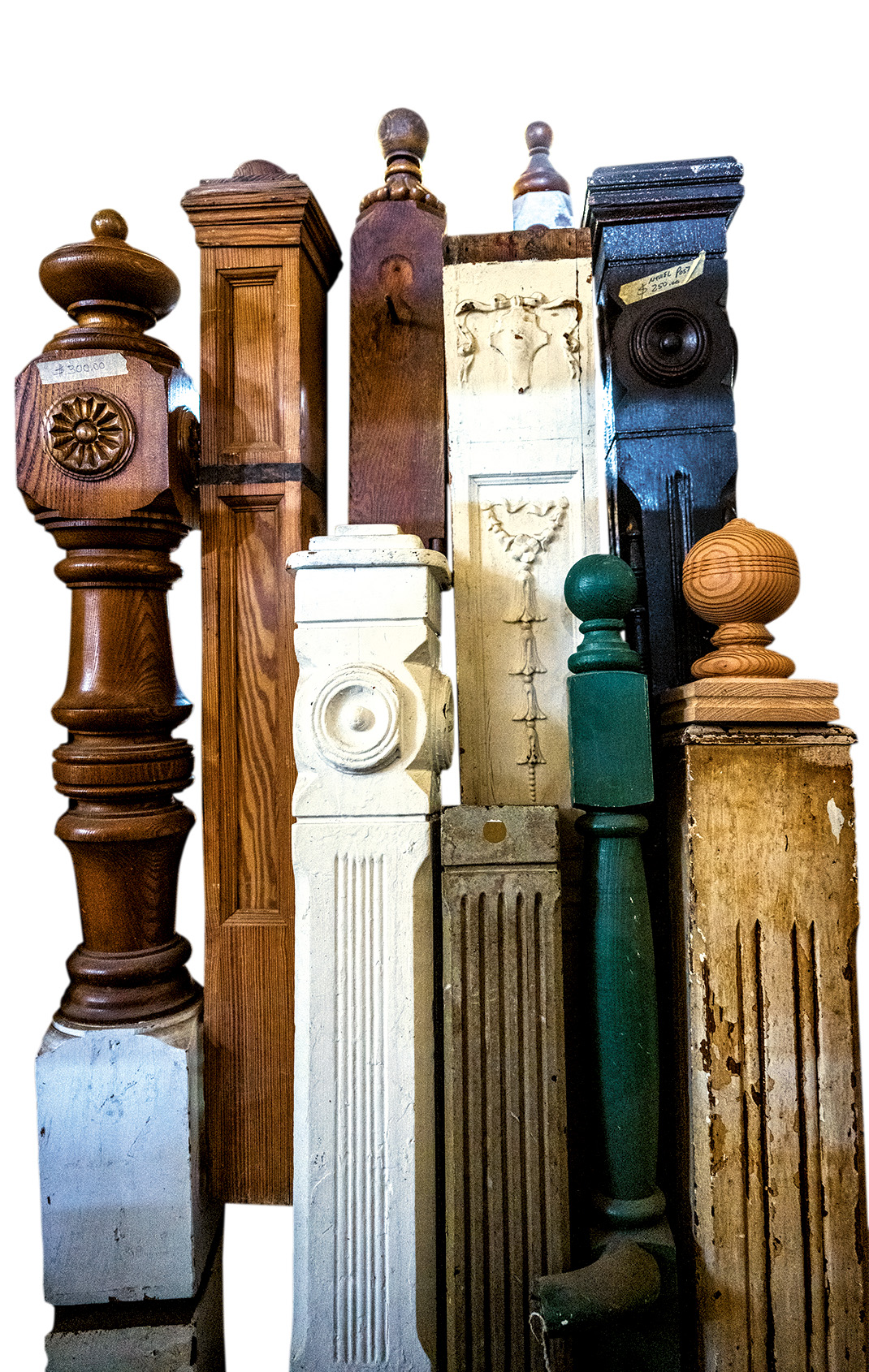
Roots for Rooting
The artifacts bank, which Miller notes got its start with the Callowhill Citizens Association in the late 1970s, has been located in Centre Park since a former resident, Bob Large, suggested the group find a home within the district when its original home, a former riverfront factory building, changed hands. Its Centre Park home was in the basement of a property on the 600 block of N. Third then owned by Andy and Vicki D’Angelo.
“It was a challenge getting 12-foot doors down there,” Miller recalls.
As the collection grew, so did the need for a bigger space. That led to renting space from photographer Tom Weigand at 705-707 N. Fifth St. The artifacts bank and the district’s headquarters and community space are at that site today as the property was acquired by the district in March 2005.
The building has become a gathering place for many folks in the district who volunteer for events, the artifacts bank and community improvement efforts. While a love of history is the unifier, there is also a sense of humor in the comradery. For in the search for historical objects, some unusual items can emerge.
Perhaps the two most unique are toilets commissioned for the late notorious Reading gangster and beer baron Max Hassel for his Hampden Heights home. The kidney bean-shaped yellow toilets were manufactured to his specifications but fatal bullets were delivered to Hassel’s head before the toilets made it to his home.
The toilets can go for the great price of $350. Well, maybe not so great as they’ve been fairly long-term occupants at the bank.
“We all think there’s someone out there who’ll want them,” says Lauter with a wink.
EDITOR’S NOTE: Donna Reed is a Reading city council member who has voted on legislation involving Centre Park Historic District issues. She served on its board of directors from 1987 through 1990.
















